Meet Superman's biggest fan in Metropolis Grove by Drew Brockington
The all-ages graphic novel creator Drew Brockington makes his DC debut
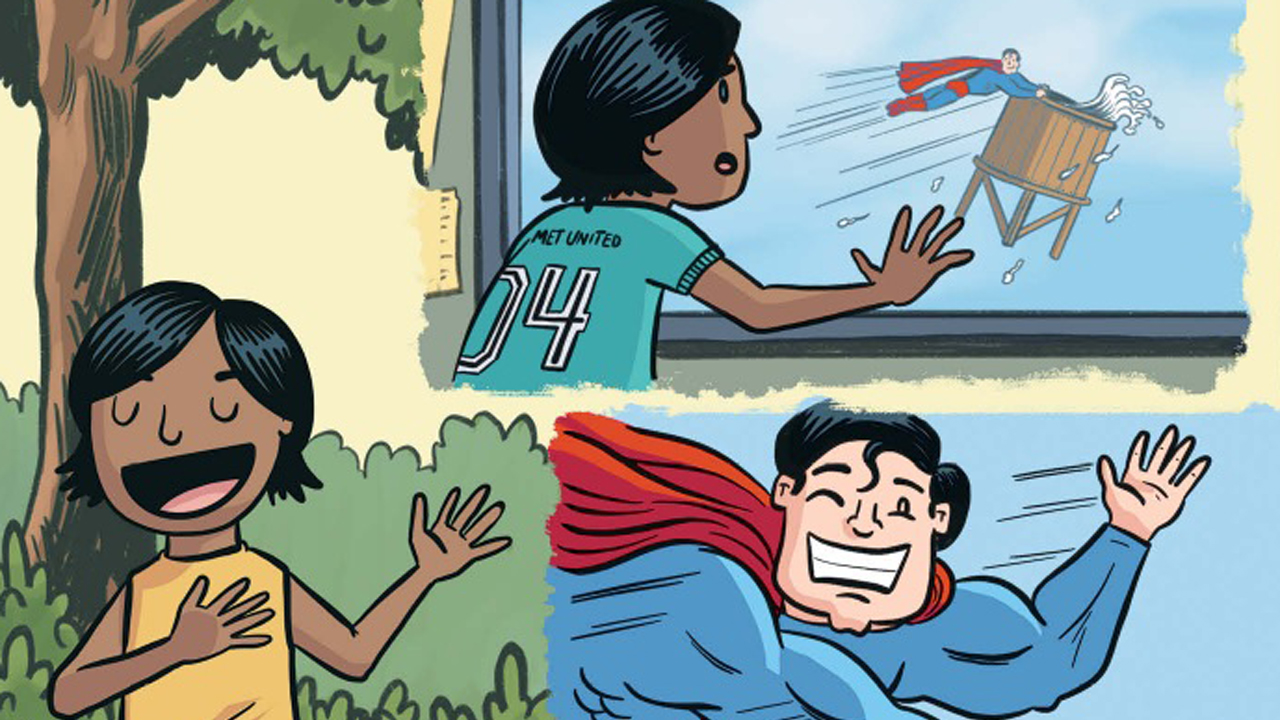
If you've checked out the all-ages graphic novels at your local bookstore, there's a good chance you've heard of Drew Brockington. Known for his anthropomorphic space adventure Catstronauts, the writer/artist has entertained elementary-age readers for years with his comics. However, for all the comics he's done, he has yet to venture into the superhero genre. That is, until now.

Metropolis Grove is an original, all-ages DC graphic novel set in the familiar world of DC superheroes, but in a locale that's anything but familiar. The eponymous town is a suburb of Metropolis, where residents don't believe in Superman like their more urban neighbors. Newsarama sat down with Brockington to talk about what it's like being a kid in this superhero-adjacent community, not to mention what childhood (and parenthood) mean to Brockington himself. Read on for more.
Newsarama: Metropolis Grove follows a fifth-grader named Sonia Patel. Can you tell me who she is? What does Superman mean to her?
Drew Brockington: Sonia is a fresh transplant from the city of Metropolis to the suburb of Metropolis Grove. She's a fish out of water. In her heart of hearts, Superman is her role model. She has a poster on her wall, a photograph by her bed. She's seen him in person and has just been so taken away with that; that someone of this magnitude and power could fly by that close to her. She just instantly became the biggest fan in the world and started collecting everything and learning everything about him.
She definitely has that sense of kid celebrity - they get so enamored with whoever it is, the pop star or whatever, that it just becomes their life and their ethos and you know what to get that kid for their birthday every year. She's a super fan.
Nrama: When Sonia gets to Metropolis Grove, there are two friends that she makes very quickly: Alex and Duncan.
Duncan is Superman-averse. He almost treats Superman like a big kid would treat Santa Claus; that he's a myth for little kids. Why is Duncan like that?
Get the best comic news, insights, opinions, analysis and more!

Brockington: Duncan is very skeptical, and some of it might be jealousy. He knows that he's in this little suburb town and he doesn't go into the big city very much. He hears about all these amazing things that happen in Metropolis on the news, you know, the showdowns and the standoffs. He hears about Superman all the time, but he never has seen anything up close with his own eyes. Everything that he's heard about this giant city next door comes from YouTube or social media.
And when he's watching on YouTube, the next video that plays is a Harry Potter or a Godzilla. So they're kind of in the same vein for him, like, the special effects from this movie are as amazing as what he's seeing on the news. Which one does he trust? That's his kid's logic being applied to basically what he's seeing.
Your comparison to Santa Claus with so many kids that age is good. They're like, 'I need to see Santa to believe it.' He's in that very skeptical stage.
Nrama: Growing up, you were more of a Sonia or more of a Duncan?
Brockington: I was more of a Sonia for sure.
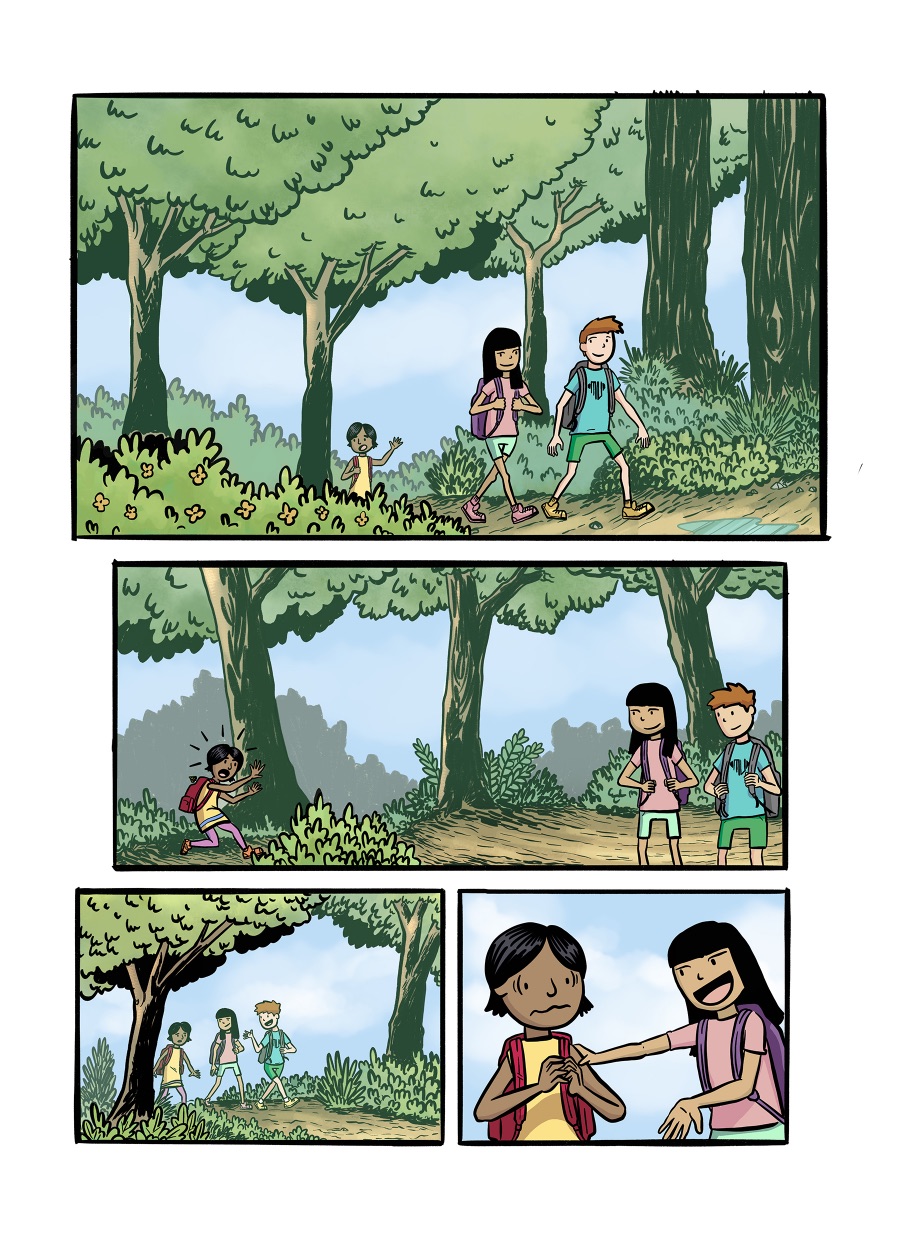
I wanted to believe in Santa Claus. I remember figuring it out on my own; putting out the can of Coke on Christmas Eve and then finding the same can of Coke in the fridge on Christmas morning. I was like, 'Okay, I get it' But I still wanted to believe it. It's too good of a story not to be true, so I'm on board for a lot of that stuff.
Even now, my kids are five and they're totally in that stage. Just being able to experience that magic and wonderment from their own perspective makes me so happy. Now I'm back in it; I'm leaving this part again.
Nrama: Do you find yourself writing for your kids, or at least the perspective of that age range, a lot?
Brockington: I think so. The more projects I'm working on and the more ideas that I'm developing always end up fitting into that elementary age reader. Whether it's kindergarten or a kid on the way out in fifth and sixth grade. There's a sense of wonderment that I really like with kids that age.
Nrama: Moving back to the story, eventually these characters run into Bizarro. Can you tell me what attracts you to that character? Why did you want to use Bizarro in this story?
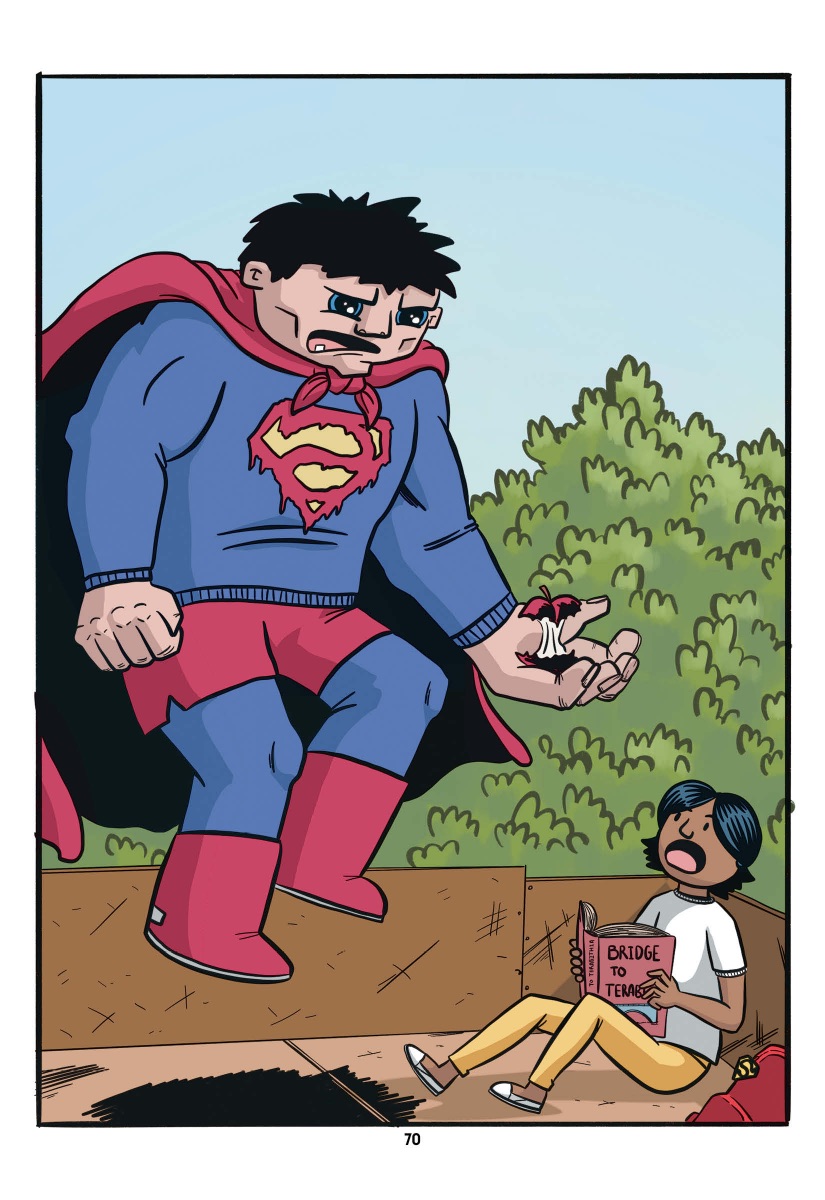
Brockington: The version of Bizarro that I settled on started as a clone in Lex Luthor's lab but then escapes. All Bizarro has had in his life is Superman, his brain is full of these big buzzwords like 'hero,' and he's trying to figure out what he should be.
I think that pairs well with kids Sonia's age. You know, you're in fifth grade, you're figuring out who your friends are and what clothes you like. All that adolescent stuff is happening and I think that's a good mirror to Bizarro, mimicking the fish out of water and learning how to survive in this new world of suburban Metropolis Grove.
Nrama: That's a great parallel. They're both these die-hard Superman fans in different ways.
There's one great visual Bizarro Easter egg that I really like in this book, which I won't spoil here, but while we're on the subject, are there other Easter eggs that fans should be looking out for?
Brockington: Then Sonia is explaining Superman to the kids; she has a PowerPoint, essentially, of how Superman landed on Earth and came to be. She drops some layout of Metropolis as a city; Millennial Park is in there. But my favorite Easter egg is when they find Bizarro's hideout.

They see a bunch of broken toys. The toys are all the '80s 'Super Powers' line of toys, from Kenner. A bunch of them are missing capes and a bunch of missing bunch of them are missing their right arms because you could squeeze their legs and their arms would punch.
When I was a kid, these arms would fall off all the time. I would find my action figures and Superman had one arm and Batman had one arm. And I would build these storylines about these action figures, that they had been horrendously wounded in battle and now are getting on with their super-lives. I love that I had a chance to put that in.
Nrama: Wow! That's a deep cut as far as Easter eggs go. So DC superheroes were pretty important to you at this age?
Brockington: Oh yeah. The 'Super Powers' figures were a tradition. Every Christmas, I would get a new one. One year, I got Wonder Woman, and my dad told me that she came with an invisible Jet. He took her legs and made her sit down and was flying her around. I was all in! I thought that was so cool.

Then there were these Batman and Superman origin comics that had records in the back. I remember checking out from the library, and those were some of the first comics that I read. I could listen to them at the same time, so that was a big grounding in that.
Then 'Death of Superman' happened, and that's when I was really getting into comic collecting and really into comic shops on a regular basis. My dad collected those from the newsstands and got the whole story line and he brought it home when he was altogether. At that age, I was not aware of anything that was going on in the world of comics but I remember reading that story multiple times and started asking for more comics and wondering what else was out there.
Nrama: Are your kids showing the same interest in, not just DC superheroes, but comics in general?
Brockington: Yeah. We've been reading lots of graphic novels. I love it because it's things that I want to read, but then they're also finding their own things. For instance, my son Simon loves Dog Man. He'll eat that up. Since age 3 and ½, he would just sit with these 180-page graphic novels that lets you follow the whole story through the artwork. He'd be cracking himself up over it and I love that.
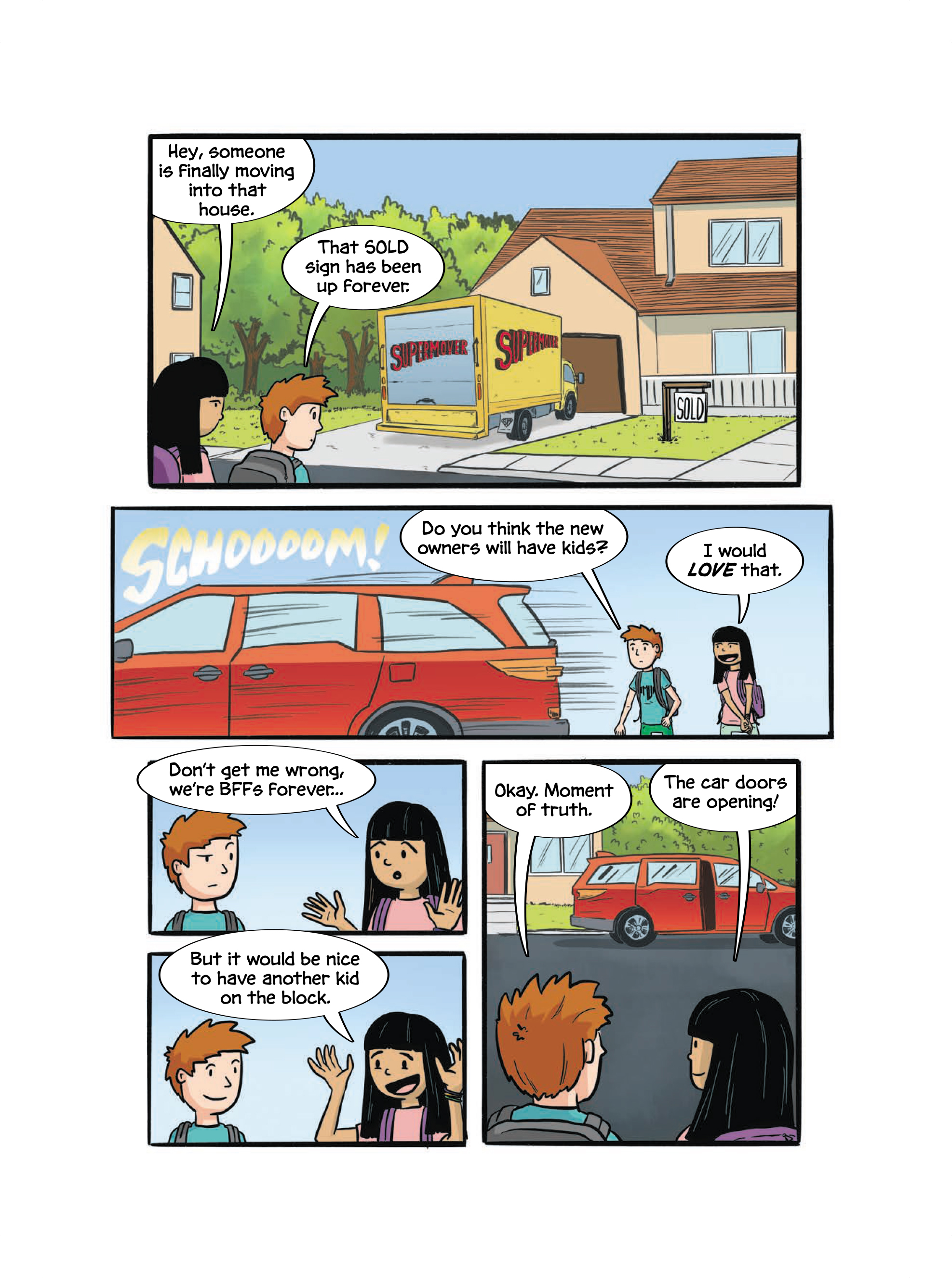
Since comics are so approachable, I'm reading other graphic novels to [my kids] that are usually intended for a kid that's in fourth grade or fifth grade, that's a little heavier. Working on [Metropolis Grove] was great because I read them the story once I have the pencils in and the rough lettering done. I immediately start reading it to them and gauge their reaction and seeing how it reads as a story.
Nrama: Wait, your kids are part of your creative process?
Brockington: Yeah! They get the version of it where the script is mostly done but the artwork is not finalized yet. A lot of it is being able to read it out loud to someone. That's when I can actually hear that dialogue of how something is said. You write it and when you say it out loud, you think, 'No one talks like that!' and then you go back in tweak it. You realize something might be funny or there's a better joke available. There are a lot of tweaks that happen during that stage.
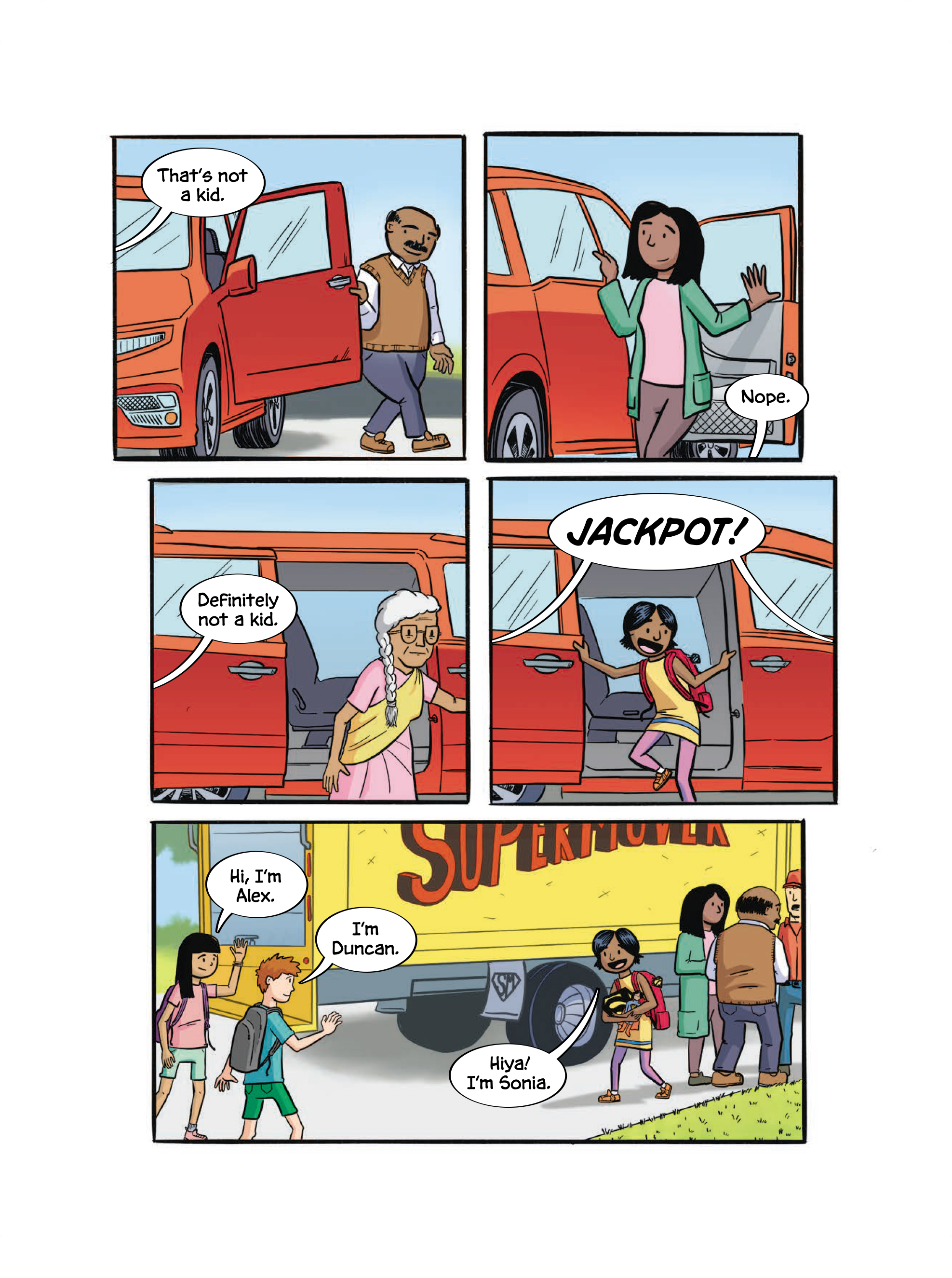
There's also a lot of protests, because I have to write a note down but [my kids] are begging you to keep reading and not pause.
Nrama: Are their editor fees pretty high?
Brockington: [laughs] Yeah. Prices go way up during Girl Scout Cookie Season.
Nrama: You mentioned that you hear the voices out loud and you make tweaks as you go. Are there tweaks you make due to any questions your kids have?
Brockington: If something's not clear, yes. There's lots of 'Why is that on fire, why is that happening?' that might carry over from one panel to another. That's been really beneficial if they think something's funny, or if there's something that's supposed to be funny and they're not laughing at it.
The biggest tweak is when I get asked, 'Who is that?' and it's a character that's appeared on every page of the book. They're asking who that is because Duncan has a new shirt on or something. Then I need to go back and make sure that that character is really clear.
Nrama: I did want to ask about working with the colorist Wendy Broome. What was your communication like with her? I imagine that you have pretty specific ideas for coloring in mind. You're the artist and writer so you see the colors in your head, right?

Brockington: This is the first project I've done that I haven't colored. At first, I was very skeptical. I was like, 'Oh no! I'm giving my baby away!' But then I saw Wendy's first few pages and her palette was so much more lush and bright than I would have imagined or chosen. It just set the tone for such a happy neighborhood and I really love that.
I loved things where, if I was doing it, I would leave backgrounds empty or splash color there or do a texture over it just to emphasize the characters. But Wendy would bring an out-of-focus, blurry neighborhood in the background so that you're almost cinematically focused on the character. It just drove the realism of the place home a little bit. That was really cool.
I was fortunate enough to do the colors on the cover, which served as a primer for Wendy. The biggest edits I hardware when I would set the artwork for a foreground, middle-ground, and a background, so that Wendy could do 100% black on the ink in the front, then scale back the color a little bit on the middle ground and then really fade out the background to bring in more depth. So there were little art notes here and there.
My favorite one was when Sonia is wandering in the woods at night and she's got this flashlight beam. She finds a frog and that beam really cuts through the darkness of the color. Illustrating that in ink but then seeing her take that and bring that to life was really cool. For the most part, it was very laid-back and every once in a while we'd say, 'Hey should we change this character's shirt or whatever?' But I was loving what she was putting down from the get-go.
Nrama: Do you write a traditional comic script first and then do the art for it? Did Wendy get the script?
Brockington: I do the scripts and the rough layouts at the same time, just for panel pacing. As I'm refining the script, I'll go through and draw the layouts inside the panel to figure it out. Then I use those for penciling and inking.
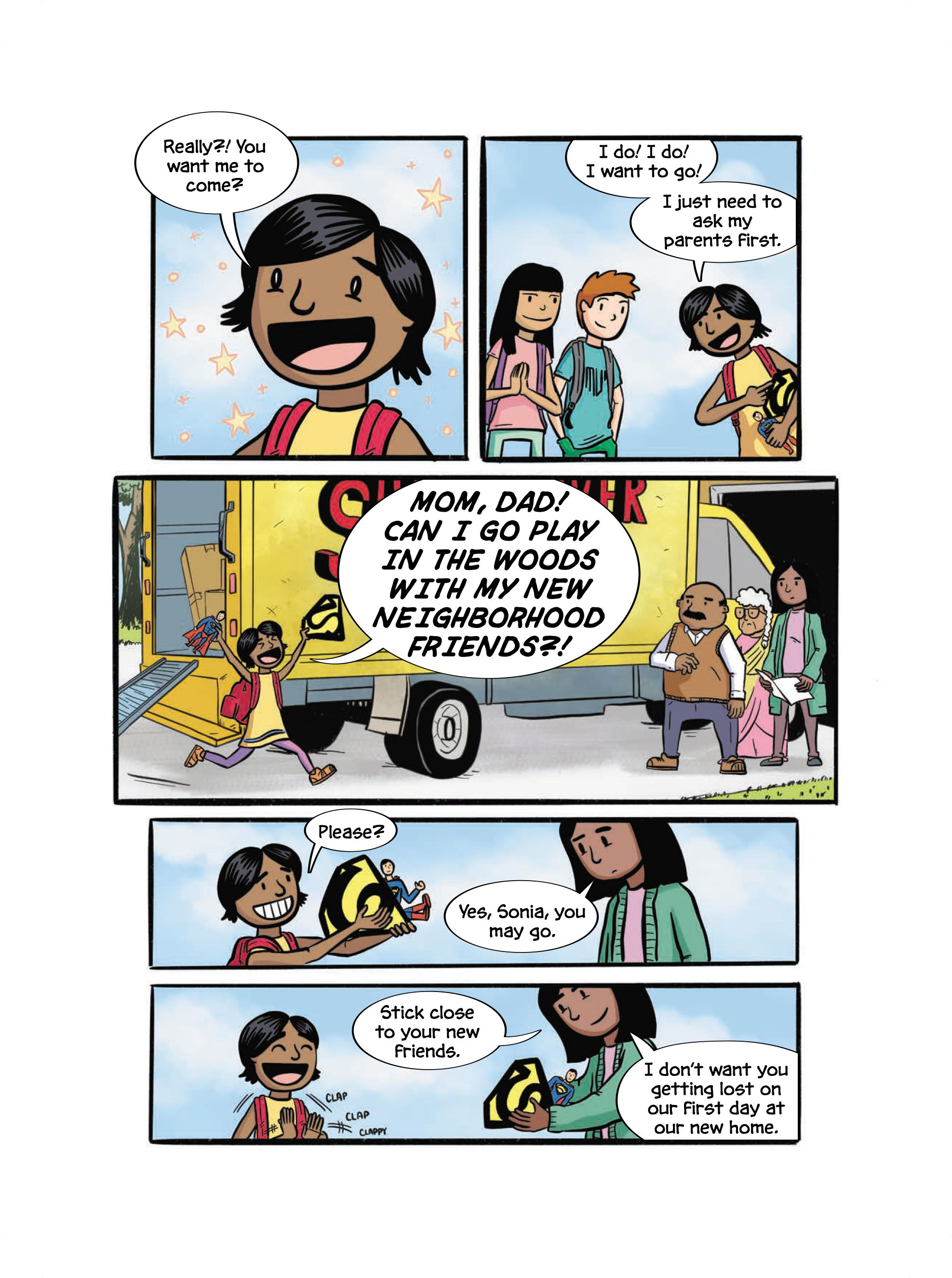
I think I inked a few earlier because DC wanted to use them for building buzz. So I inked a few pages that DC chose after the pencils, and Wendy got to use those to color.
Later, we got to comment on those colors and figure out the necessary method of moving forward. The best way to set up and all that stuff.
Nrama: Has that simultaneous writing and drawing always been your process? For instance, was that how you worked on Catstronauts?
Brockington: It's something that gets involved the more books I've worked on.
A big thing I try to do is to keep in mind, when I'm writing, the reader flipping the page. I really like figuring out where my panels are going to fall on the pages so that I can build up to big reveals. The coolest thing about comics is when you turn the page and there's a two-page splash. I'm always like, 'How do I build up to that?'
When I'm writing, I have basically a thumbnail of however many pages on a single regular sheet so that I can see the whole chapter at a glance. I can see how it's going to progress and where my beats are going to hit and how they're making sure that I'm building up to that big page turn. I'm planning that exciting reveal or making sure a punchline is falling on the last panel of the right page so that it's not lost. The physicality of the book is something I'm very aware of when I'm writing. It's always nice to turn in a script to a publisher and say, 'Here's some really rough layouts. Take it or leave it.' To show them where everything is at.
Nrama: How would you say this was different than working on Catstronauts and other stuff you've drawn?
Brockington: The artwork for this book wasn't harder but it was… more intensive, I guess? The previous stories that I've done have all been anthropomorphic characters: cats in space suits, etc. You can get away with a lot more when you're drawing unreality. But these are people and they are in a world that has everything to do with humans, especially when it's compared to the main Superman run, which has much more realistic artwork happening.

In the initial cover design that I submitted, all the characters have four fingers on their hands. The more I was penciling it, the more I was like, "No, that's not right. These are real people. They live in the world where Superman lives and Bizarro lives." So that was a big change, adding that finger back in there. Once I did that, all of a sudden everybody's motion and poses they were striking became based off of the human body, so there was a lot more of me asking, 'Does this look natural? Does this look real?' Even though it is simplified and more cartoony, [the characters] have that grounding in reality. So I had more riding on the line for that.
Nrama: What was your favorite part of the story?
Brockington: I really like how Sonia has an arc that follows Bizzaro's. And then her friends are the opposite. Sonia's a fish out of water in Metropolis Grove, but her friends are the kids that know the woods.
I love that they teach each other and learn from each other and that, even though they're instant friends, they still have that underlying need to keep secrets. There's always that underlying worry, no matter how comfortable you are around someone, that something is going to screw it up. That can really cause more of a wrench than is ever necessary, considering how easy it is to clear it up with communication.
Metropolis Grove goes on sale on May 4 in comic shops, bookstores, and digital platforms. For the best digital comics reading experience, check out our list of the best digital comics readers for Android and iOS devices.

Grant DeArmitt is a NYC-based writer and editor who regularly contributes bylines to Newsarama. Grant is a horror aficionado, writing about the genre for Nightmare on Film Street, and has written features, reviews, and interviews for the likes of PanelxPanel and Monkeys Fighting Robots. Grant says he probably isn't a werewolf… but you can never be too careful.


